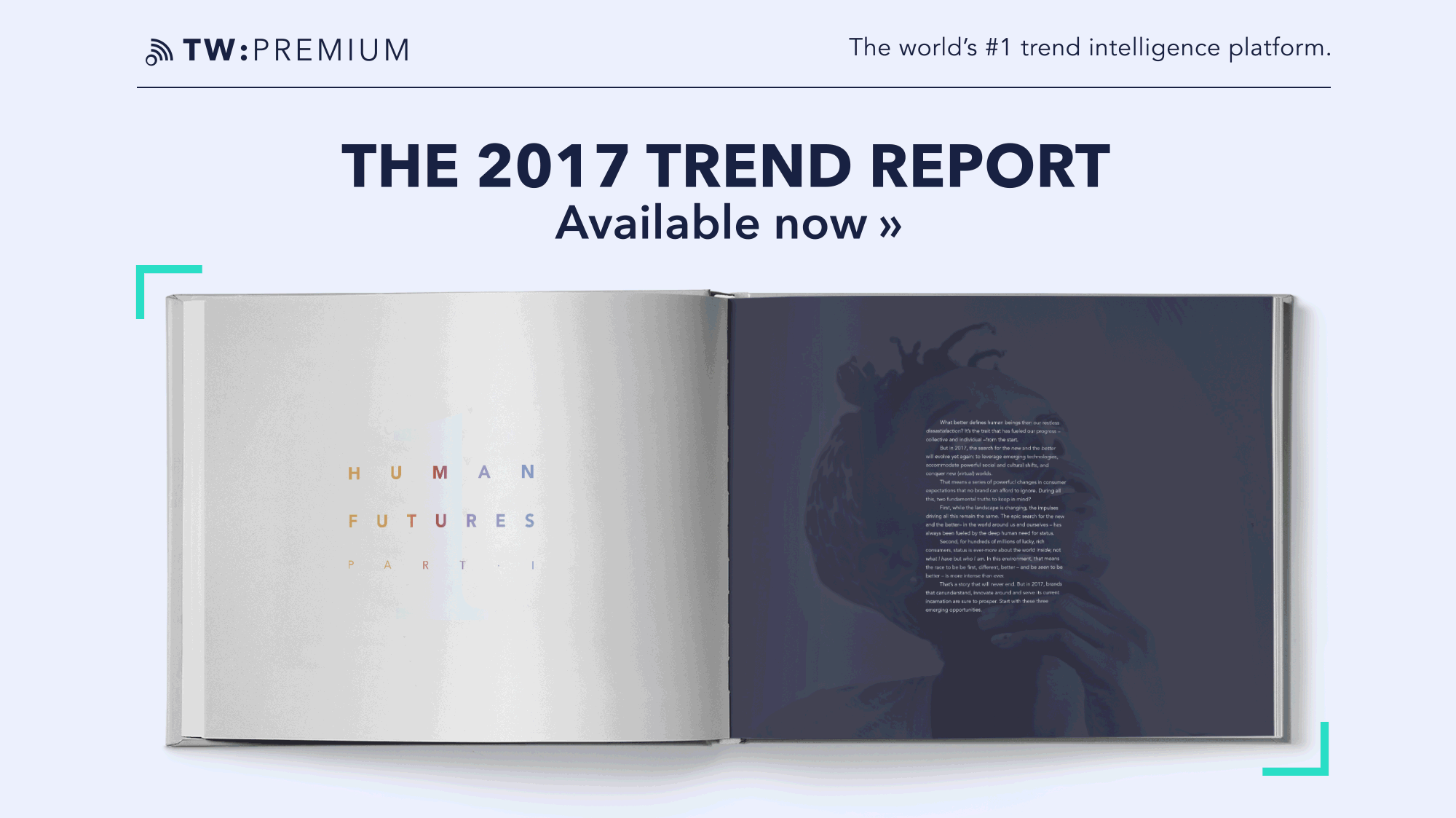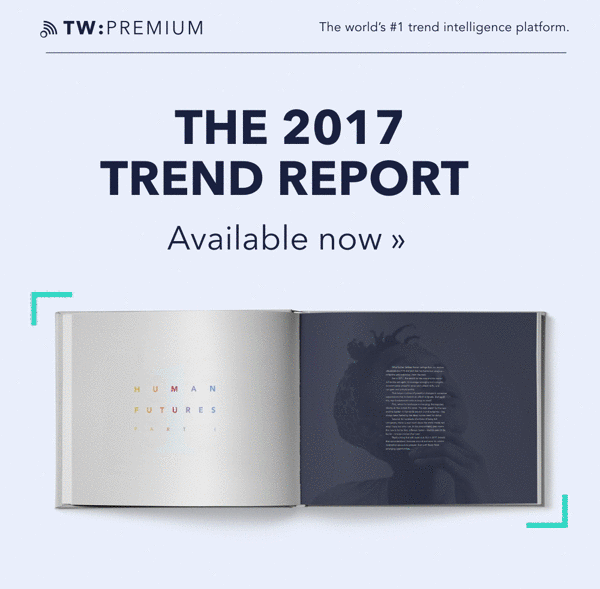The standing desk. The 5:2 diet. Mindfulness. Self-tracking. Paleo meal plans. Health and wellbeing in 2016 means a constant stream of new apps, connected devices, eating fads, wannabe lifestyle movements and more. For innovators, one Big Question emerges: where is all this heading? One thing is certain: the world doesn't need any more meditation apps (this one comes with a special headband ;)
Once in a lifetime has become another Saturday afternoon.
That's the Experience Economy for you ;)
Millions of consumers live in societies of once undreamed affluence. Objects that were rare are now ordinary. The Experience Economy turned amazing into expected. Digital connection widened the scope of people’s lives – the social access, resources and knowledge – beyond recognition.
Sure, life isn’t like that for everyone. But even in less affluent societies, it’s the direction of travel. Meanwhile, expectations are being set by the latest, best and most exciting worldwide.
What happens in this kind of environment? We’ve all read our Maslow: people turn to self-actualization. That is, an endless search to realize the idealized version of themselves that they carry around in their head.
What can we add that Maslow didn’t? In 2016, consumerism is the primary means by which people pursue that search. The brands they’ll notice, engage with, love, are those that help them be the people they want to be. That’s why (bold claim coming) self-actualization is the future of consumerism.
So where does health and wellness fit in to all this?
This isn't about visiting the doctor.
It's about health as self-enrichment. Health as achievement. Health as STATUS.
Self-actualization isn’t about avoiding or treating illness. That’s a matter of survival that belongs at the bottom of Maslow’s pyramid.
And of course there’s plenty about self-actualization that isn’t health related: ethics, creativity, taste, humor, and more.
But for many people, physical, mental and emotional peak performance are a fundamental part of self-actualization. That means they’re fundamental to how they seek meaning in their lives.
That’s why every brand should be asking two key questions. How are expectations around health and wellness evolving? How can we meet those expectations – and help people fulfil their dreams of being better humans?
These six trends are a great place to start.
And to understand why we named this Trend Briefing THE FUTURE OF BETTERMENT, take a look at The Bigger Picture at the end (clue – BETTERMENT is one of the 16 mega-trends via which we track the entire consumer arena).
Six trends defining the future of BETTERMENT in 2016 and beyond.
1. AMBIENT WELLNESS
Health boosting features – embedded into the environment.
2. CALIBRATED HEALTH
Get ready for the age of individualization.
3. VIRTUAL ACTUALIZATION
Virtual realities, real (physical, cognitive, emotional) improvements.
4. IMPACT INDICATORS
Instant, useful real-time feedback on health and wellness impacts.
5. DISTRIBUTED DIAGNOSIS
New, innovative and seamless ways to access health services.
6. POST-DEMOGRAPHIC BETTERMENT
Throw out old thinking and embrace POST-DEMOGRAPHIC diversity!
AMBIENT WELLNESS
Health boosting features – embedded into the environment.
Everybody wants to be healthy.
Ain't nobody who wants to go for a run, eat salad and get a good night's sleep* ;)
The world of health and wellness is full of good intentions. I’ll start running this year. I’ll lose weight this month. Tomorrow, I’ll meditate to become a more balanced person.
The problem is, good intentions are hard to stick to. There’s nothing new in that.
But now, consumers – especially city dwellers – are also beset by a rising awareness of the toxic impacts of their environment and the lifestyle that it encourages. Think air pollution, late nights, food on the go, the stress of the daily commute, and more.
The result? Rising numbers will now expect brands to embed innovative health-boosting technologies into the environment around them. These AMBIENT WELLNESS initiatives should help offset damage to health and wellness – or even produce an entirely new, health-positive effects (often with zero effort required).
Time to build some AMBIENT WELLNESS into your offering?
*With thanks to iconic bodybuilder Ronnie Coleman for the original quote: ‘Everybody wants to be a bodybuilder, ain’t no one wants to lift no heavy ass weights’ ;)
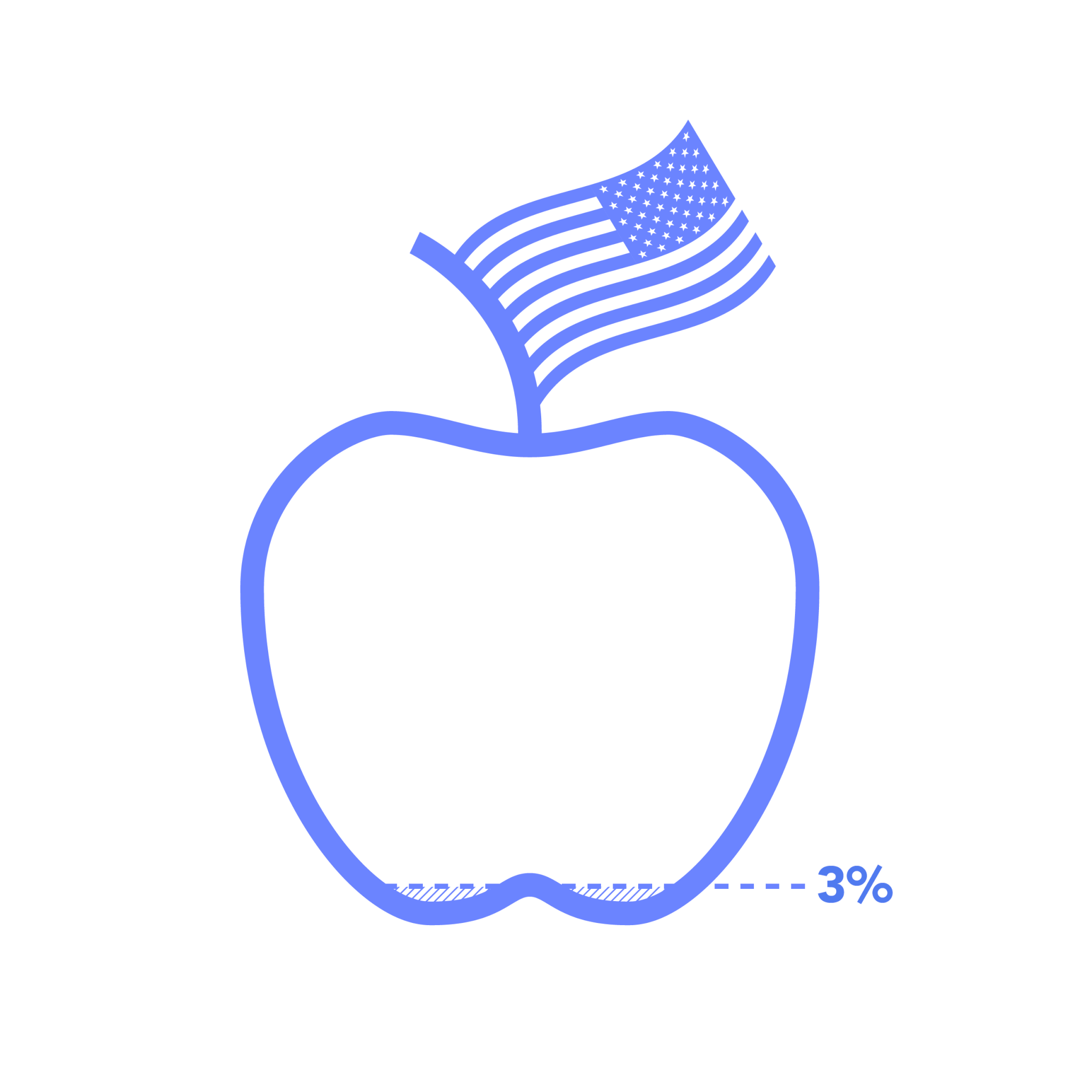
Fewer than 3% of Americans meet the basic criteria for a healthy lifestyle, which include regular exercise and not smoking.
Mayo Clinic, March 2016
Starbucks & Philips
Café chain helps boost energy levels with daylight lamps
In January 2016, Philips transformed four branches of Starbucks in the Netherlands into EnergyUp cafés. Philips EnergyUp lamps were placed around the cafés for patrons to use while they drank their coffee. The lamps are designed to have a mood-lifting, revitalizing effect after around 20 minutes of use; Philips say they produce this effect by mimicking natural daylight.
Headspace
Pods bring meditation to public spaces
February 2016 saw meditation app and events company Headspace announce a collaboration with Los Angeles-based architectural practice, Oyler Wu Collaborative on their new Headspace Meditation Pods. The wood and steel structures can be placed in public places and are intended to create a private space for meditation. Headspace say that they hope to place Meditation Pods at airports, schools, parks and stations.
Kit-Kat
Candy brand’s billboard offers free massages
Kit-Kat ran a campaign in October 2015 to promote the launch of the brand in Colombia. In line with its slogan, ‘Have a break, have a Kit-Kat’, the company offered free massages via billboards. Twenty special billboards were dotted around the city of Bogota featuring tiny, vibrating motors. Passers-by simply had to lean against the billboard to receive a back massage. Additionally, each time somebody used a word such as ‘tired’ or ‘stressed’ on Twitter, they would receive an instant reply showing the location of the nearest Kit-Kat billboard on Google Maps.
Qatar Airways
Passenger plane interior designed to combat jet lag
December 2015 saw the arrival of Airbus’s carbon fiber A350 XWB jets, which are fitted with devices to combat jet lag. Debuting on Qatar Airways routes to the US, Asia and Europe, the plane interiors are fitted with LED lights that change their color temperature to mimic the sun’s glow, coinciding with passengers’ natural circadian rhythms. The planes’ air-filtering system also reduces the effects of jet lag by maintaining pressure equivalent to 1,828.8 meters (6,000 feet) altitude.
NEXT
Want to deliver your own slice of AMBIENT WELLNESS? Ask: what negative health impacts do customers typically endure when they engage with us? What is our 'jet lag'? Can new technologies help us alleviate that damage? Or can we offer something entirely health-positive – even playful – that aligns with our brand positioning, as Kit-Kat did?
CALIBRATED HEALTH
Get ready for the age of individualization when it comes to health and wellness.
Where is my DNA-personalized salad?
True genetic personalization grows ever closer, but the expectations it is helping to create are already here.
Digital consumerism has heightened expectations of totally individualized offerings. See the recent success of the Spotify Weekly Playlist, a personalized music selection that many users say has an uncanny understanding of their music taste.
Meanwhile, the same consumers know that when it comes to health, DNA personalization of treatments, dietary advice, fitness regimes and more is on the horizon: a fire being fueled by a wealth of genetic tech startups such as 23andMe (see next slide).
The consequence? Expectations created online are converging with those created by new health tech to drive demand for health and wellness products, services and experiences that are personalized around the individual.
And those expectations of individualized CALIBRATION apply to both digital and physical offerings…
Genetic tech startup 23andMe resumed service in October 2015, after aspects of its DNA test were banned by the FDA in 2013. The company now has FDA approval to provide health information – including susceptibility to certain diseases – based on DNA analysis of a saliva sample. 23andMe now plan to develop DNA-personalized medicines.
Vita Mojo
Salad restaurant lets patrons choose personal mix of ingredients
What does analogue CALIBRATED HEALTH look like? How about calibrated eating?
Opened in the UK in March 2016, Vita Mojo is a salad restaurant built around the idea of personalized food. Using in-store iPads, diners at Vita Mojo can choose the ingredients of their salad, and then use sliding bars to specify how many grams of each ingredient they want. Dynamic charts automatically show how this affects the meal’s nutritional content, and the price.
Design My Day
App lets users design a wellness-promoting daily schedule
CALIBRATED HEALTH doesn’t have to mean personalized products. What about letting consumers design personalized experiences and schedules?
Design My Day is an app and website designed to help those feeling low, unmotivated or uninspired to schedule their day. The platform provides access to thousands of crowdsourced and peer reviewed ideas for meaningful activities based on how a user is feeling. Users can choose from the ideas to design a personalized daily schedule intended to promote mental wellbeing. In November 2015, Design My Day won an award for best startup at the Startup Weekend Bali competition.
Wiivv Insoles
3D-printed insoles are customized via smartphone pictures of wearer's feet
New manufacturing technologies can be put to work to calibrate health and wellness products. Let’s start with trainers…
Reaching their funding target on Indiegogo in February 2016, BASE are customized trainer insoles. Customers use the Wiivv app to take five pictures of their feet; Wiivv then use the images to design insoles that perfectly fit the contours of each foot. The insoles are 3D-printed using SLS technology, and covered in a layer of cushioning and silicon treads.
uBiome
Service analyzes gut bacteria
Consumers know that a hi-tech revolution in personalized healthcare is underway. Now, they’ll expect to be able to access that revolution.
In October 2015, US-based biotech company uBiome became the first for-profit company to launch an app for Apple ResearchKit. Consumers use the app to answer health questions. They then receive a kit in the mail, take a swab from their toilet paper, and send it to uBiome, who analyze the bacteria and provide a detailed report via the app. Gut microbes are involved in a range of physiological processes, including digesting food and synthesizing vitamins, and there is some evidence they can influence mood and behavior.
Food and Drug Administration
Platform to accelerate development of personalized medicine
One glimpse of where all this is heading in the longer term? Towards universally accessible, DNA-individualized healthcare…
December 2015 saw the Food and Drug Administration unveil precisionFDA: a collaborative platform allowing scientists to further develop a method of reading DNA called next-generation sequencing (NGS). NGS will allow scientists to compile data on an individual’s DNA, and look for differences that can predict diseases and identify how individuals will respond to treatments. The site is part of Personalized Medicine, an initiative that eventually aims to provide medical treatment based on an individual’s lifestyle, DNA and environment.
NEXT
Remember, offering some CALIBRATED HEALTH doesn't have to mean employing cutting-edge tech. It's serving the expectations of personalization that is important here. That can be as simple as letting customers CALIBRATE their lettuce ;) So how can you help customers manage their health by CALIBRATING what you offer?
VIRTUAL ACTUALIZATION
Virtual realities, real (physical, cognitive, emotional) improvements.
Digital tech hasn't turned us into superhumans.
Yet ;)
In 2016, virtual reality finally becomes real for millions of consumers thanks to the first generation of in-home devices: the Samsung Gear VR, Oculus Rift, HTC Vive, PlayStation VR, and more. One glimpse of the mainstreaming of this technology? In November 2015, the New York Times partnered with Google on a VR film and gave away 1 million Google Cardboard VR headsets.
Digital technologies have always been intimately related to dreams of self-actualization. But many consumers have learned through experience that yet more wristbands, tracking devices and smart objects aren’t always the answer to better health.
Now, those consumers will look to VR to offer a new and broader take on wellness. Yes, that means physical fitness. But also emotional wellbeing, cognitive performance and personal growth.
One way to make your VR play stand out in 2016? Serve up some VIRTUAL ACTUALIZATION.
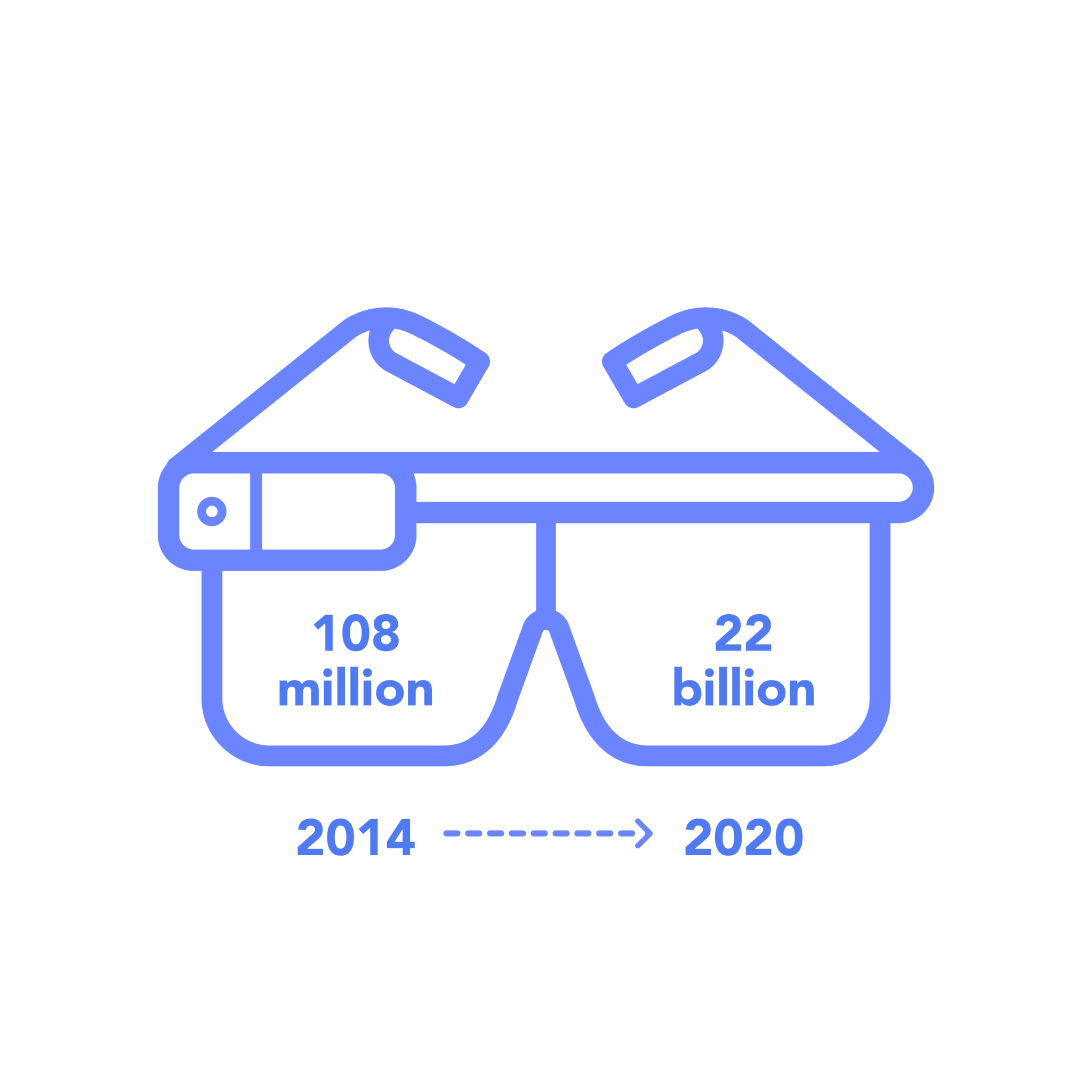
Consumer spending on VR will increase from USD 108 million in 2014 to USD 22 billion in 2020.
Tractica, July 2015
VirZoom
Exercise bike facilitates VR workouts
Unveiled at CES in January 2016, VirZoom is a stationary exercise bike that connects with virtual reality platforms to make working out more immersive and fun. Users can plug in virtual reality devices (such as the Oculus Rift) and then select a game to play while they exercise, including horse-riding or auto-racing. Created in the US, the VirZoom system is priced from around USD 300, including games.
Samsung
VR experiences help participants face real-life fears
Samsung’s 2016 Be Fearless campaign, promoting the Samsung Gear VR, saw 27 people use VR to overcome their fear of heights or public speaking. Participants underwent a four-week VR training course intended to help them confront their fear and find ways to overcome it. Those afraid of public speaking, for example, faced a series of VR environments in which they were asked to speak, starting with a small crowd and building up to a large audience. VR training helped 87% of those afraid of heights to reduce their anxiety level by 24%. Meanwhile, 88% of those afraid of public speaking reduced their anxiety levels by 19%.
Cerevrum
VR brain training games improve cognitive abilities
Launched in January 2016 for the Samsung Gear VR platform, Cerevrum is the ‘world’s first VR brain training game’. Set in a world of powerful gods, players challenge their brains with games that target cognitive abilities including memory, focus and speed of perception. Cerevrum say they will soon launch the game on Oculus Rift.
Aichi University of Technology
VR experiences make users more resilient in a natural disaster
In March 2016, the Aichi University of Technology released three VR videos intended to prepare viewers for natural disasters. The VR tsunami simulator – which can play on Oculus Rift, Gear VR or Google Cardboard – comprises of three immersive videos that depict a tsunami similar to the one suffered by Japan in 2011. Viewers are taken through various realistic and challenging survival scenarios, in order to help prepare them for such an event.
NEXT
A zillion brands will ride the VR wave in 2016. How can your VR campaign help make people better? Remember, think broadly about wellness – or even about other forms of self-improvement. How about making people more ethical? SpaceVR plan to send a VR camera to the ISS to capture footage of Earth so that everyone can experience the Overview Effect: a renewed sense of the unity and fragility of planet Earth.
IMPACT INDICATORS
Instant and useful real-time feedback on health and wellness impacts.
Any feedback?
Consumers primed on the Quantified Self know that more information can play a crucial role in MOTIVATION.
The Quantified Self movement taught millions of consumers to absorb new streams of health information and adjust their behavior accordingly. How far do I walk each day? How much do I sleep? What am I eating?
Yes, self-quantification has limits that many are now looking to exceed (see VIRTUAL ACTUALIZATION, above). But it did establish one powerful truth: good information can play a crucial role in one of the most important health and wellness issues of all. That is, motivation to do the right thing (whether that’s stopping what you’re doing, or doing more of it ;)
Now, the expectations created by that truth are converging with broader expectations that the physical world around us should be more informative and responsive, all in real time. In other words, more like the digital world.
Put all this together, and you get rising expectations of real-time, actionable and informative feedback on the health and wellness impacts of daily behaviors, from sunbathing to hitting the gym.
Nivea Brazil
UV-sensitive doll highlights the danger of sun exposure
In June 2015, Nivea Brazil unveiled a range of UV-sensitive dolls to promote the use of sunblock and inform children about the dangers of going sunscreen-free. The Nivea Doll was made from UV-sensitive material that, when exposed to sunlight, turns red indicating the harmful effects of the sun. The application of sunscreen counteracts the ‘sunburnt’ effect, highlighting the importance of wearing sunblock.
La Roche-Posay
Lightweight UV patch monitors sun exposure
How about a more adult-friendly IMPACT INDICATOR when it comes to sunburn?
January 2016 saw La Roche-Posay unveil My UV Patch: a transparent adhesive patch that can be applied to the skin to monitor UV rays. Photosensitive dyes change color when exposed to UV rays, gradually revealing a heart shape. Users can take a photograph of the patch and upload it to the My UV Patch app to find out about their level of sun exposure. The patch can be worn for several days in a row, and will be launched across 16 countries from Q3 2016.
Oral-B
Toothbrush uses location-tracking technology to provide real-time feedback
Oral-B say that most people tend to focus their teeth brushing on a few areas and miss others, leading to cavities and infections. Unveiled in the US in February 2016, the USD 250 Oral-B GENIUS syncs to an app, with a suction-cup enabling users to mount their cellphone on a wall front of them while brushing. The app merges information gained via the cellphone camera with data from the toothbrush’s motion and acceleration sensors to detect the location of the toothbrush in the mouth at all times. The app then generates a map that shows users which zones in their mouth need more attention.
Progress
App lets users track body changes via selfies
Available to download from March 2016, Progress is an app that lets users track their weight loss or fitness progress by taking daily selfies that are perfectly aligned. When a user goes to take a selfie, the app displays a faint outline of the selfie from the previous day to help ensure that the pictures and perfectly aligned and therefore directly comparable. After 15 days, the app allows users to create a time-lapse video of their changing body shape. Data from the app will also sync to Apple HealthKit.
SmartSpot
Smart mirror helps gym-goers improve their form
Launched in March 2015, SmartSpot is a smart mirror designed to help people improve their workout sessions at the gym. The US-developed mirror uses 3D cameras to capture a 3D portrait of the bodies of gym-goers while they perform bicep curls, squats, lunges, and other exercises. It then provides them with real-time reporting on their form, displayed on the large floor-standing mirror-like screen, and can also log videos of their workouts that can be later viewed and analyzed by personal trainers. SmartSpot workstations cost USD 2,499.
DISTRIBUTED DIAGNOSIS
New, innovative and seamless ways to access health and wellness services.
Please bite here for an appointment.
Traditional health services and processes are becoming available via innovative new channels.
In FIVE TRENDS FOR 2016, we told brands to forget about omnichannel and instead focus on CONTEXTUAL OMNIPRESENCE: using innovative new channels and new customer contexts to be in the right place at the right time.
As we’re always saying, any trend can be adapted for any industry.
So what does CONTEXTUAL OMNIPRESENCE look like when applied to health and wellness?
Here’s part of the answer: rising expectations that traditional health services, processes, tests and treatments are made accessible via innovative new channels. Those expectations are being driven, of course, by time-pressed, ultra-demanding consumers who want what they want, when they want it.
That means DISTRIBUTED DIAGNOSES made available via smartphone, public transport, and, yes, apples.
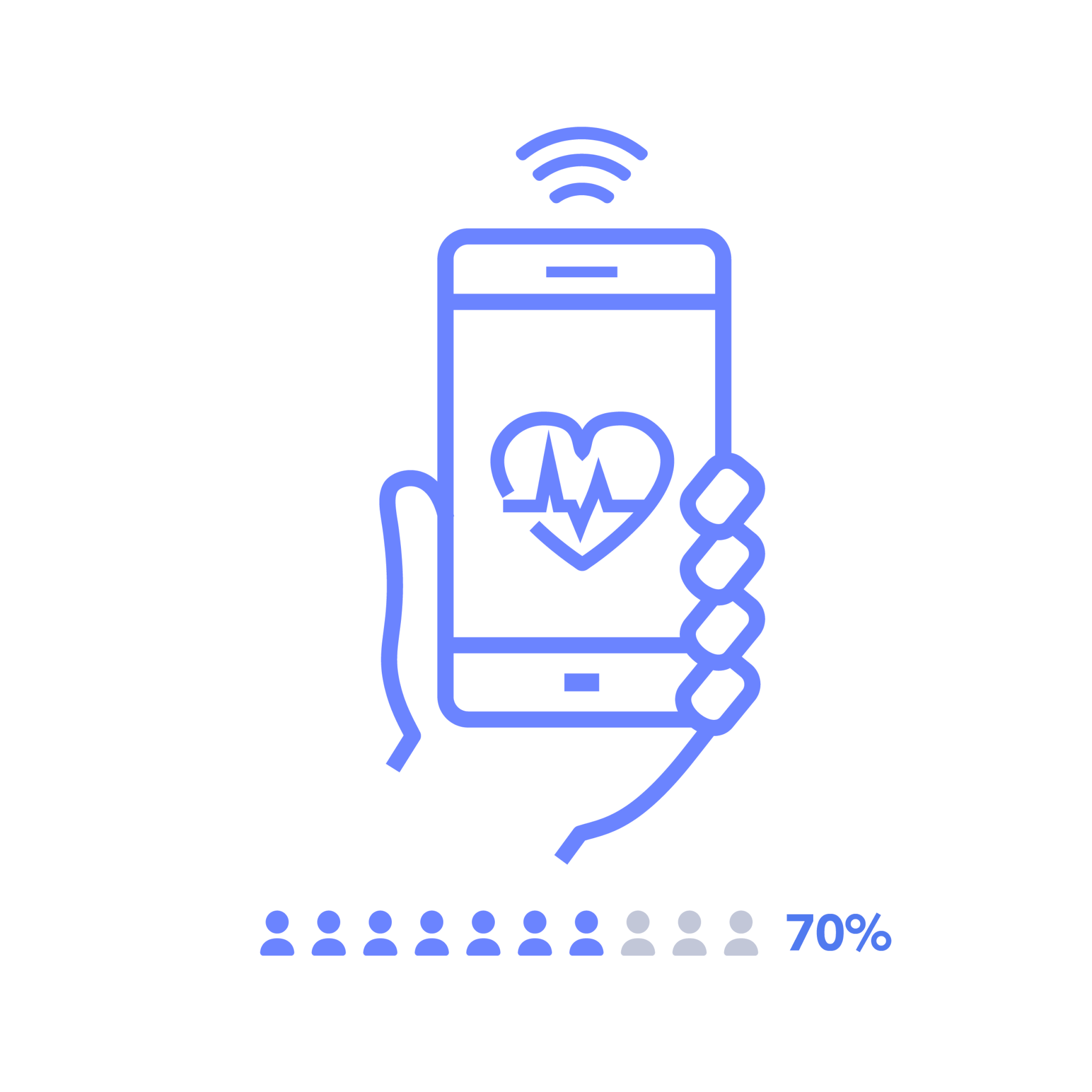
70% of people say they’d rather have a virtual consultation than an office visit to obtain a doctor’s prescription.
American Well Telehealth Consumer Survey 2015
Matsumoto Apple Association
Eating an apple sets up free dental consultation
In November 2015, the Matsumoto Apple Association unveiled a line of apples that include free personalized dental consultations. The Japanese organization’s JPY 200 (USD 1.60) Dentapples feature a sticker with a QR code giving access to a mobile app, which invites consumers to take four bites of the apple and upload photographs of these. Once participants have answered a few dental-related questions, they can then enjoy a free consultation with a professional dentist within 24 hours, based on data gathered from their bite marks.
Vodacom
Hearing test via smartphone
In March 2016 South African telecoms brand Vodacom partnered with the University of Pretoria to launch a free smartphone-enabled hearing test for World Hearing Day. The hearZA app allows users to self-administer a hearing test using any iOS or Android smartphone. The app tests for hearing perception of speech amid background noise. If a user receives below normal results, the app prompts them to book an appointment with a hearing specialist. By the end of March 2016, over 9,000 South Africans had tested their hearing using the app.
Yili
Handles on bus measure key health metrics
In May 2015, Chinese dairy brand Yili launched a campaign to promote healthy living. The brand replaced ordinary straps on Beijing buses for health monitoring systems so that when passengers gripped the strap, the device measured their heart rate, body mass index and balance. The strap also synced with cellphones, giving people free real-time health information during their daily commute. The initiative saw 6,000 monitors introduced across 200 buses.
NEXT
DISTRIBUTED DIAGNOSIS is about using new channels to reach consumers with health and wellness offerings. For those who want to go further, consider the other side of the CONTEXTUAL OMNIPRESENCE coin: new customer contexts. How can you use new information about consumers – their preferences, daily behaviors, mood, and more – to be there when they need you?
POST-DEMOGRAPHIC BETTERMENT
Throw out old thinking and embrace POST-DEMOGRAPHIC diversity!
Time for a new health and wellness paradigm.
A big idea to end on ;)
Regular readers already know where we stand on demographics.
But for the uninitiated: the old demographic model – which sought to predict consumer behaviors based on age, gender, location, income bracket and more – is losing its power. Instead, consumers are freer than ever to construct lifestyles and attitudes of their own choosing. That’s thanks to unlimited access to information, the erosion of old social conventions, endless choice, and more.
The implications for health and wellness are massive – and far from rocket science. It’s time to throw out old thinking on who will want to engage with which health and wellness products, services and experiences, and embrace an altogether more diverse, fragmented, and yes, even chaotic reality.
That’s a reality in a consumer area where men are the fastest adopters of yoga and women are embracing powerlifting. In which older people set the latest fitness craze. In which smart brands help employees transition from one gender to another.
Yes, a huge challenge. But that means huge opportunity for the brands that get it right.
The popular #liftlikeagirl hashtag was inspired by a February 2015 video by the women's weightlifting team at Oxford University.
Moon & Son
Stylish yogawear for men
POST-DEMOGRAPHIC BETTERMENT means throwing out old preconceptions when it comes to gender and health behaviors.
Launched in October 2015, Moon & Son offers stylish apparel for men who practice hot yoga. Founded by former Men’s Vogue Fashion Director Stephen Watson, garments are made from a moisture-wicking fabric that is ‘super stretchy’ and cut loose to allow freedom of movement. Pieces include shirts featuring yoga-themed prints from the New Yorker. The 2016 Yoga in America Study by Yoga Journal found that new uptake of yoga in the US is fastest among men.
Public Dance Classics
App teaches people to dance like Chinese grannies
In a POST-DEMOGRAPHIC consumer arena, health behaviors spread across demographic boundaries more easily than ever. And older people create health crazes that younger people want to copy!
Launched in March 2015, Public Dance Classics is an app inspired by public square dancing: an activity that’s become a national phenomenon in China. The free app enables anyone to learn the most popular dances, which are performed regularly by groups of older ladies in public squares. The app features instructional videos for 30 dances, including 12 government-approved routines. It received 50,000 downloads within the first two months of release.
Mandarin Oriental Barcelona
Luxury holiday package designed for marathon runners
One way to take advantage of this trend? Overturn the old, demographic thinking about who your customers are – and target entirely new kinds of people.
In January 2016, the Mandarin Oriental Barcelona unveiled two luxury programs for people running in the March 2016 Barcelona Marathon. The hotel’s Marathon Package includes three night’s accommodation, personalized coaching, a running t-shirt, and two spa treatments; Get Ready offers a five-day training plan designed in collaboration with a local sports medicine clinic. Prices for the package start from EUR 2,025 for two people sharing a room.
Lululemon
Yoga brand launches craft lager
In a world where consumers aren’t behaving as expected, neither should brands! One play for health brands? How can you delight existing customers – and win new ones – via an entirely new product or service? After all, even health-obsessed consumers want to cut loose sometimes!
In Q3 2015, Lululemon partnered with Vancouver’s Stanley Park Brewing to produce Curiosity Lager. 80,000 cans of the 4.6% ABV lager were made, available to buy in liquor stores across British Columbia and Alberta. The brewer had previously produced a beer for the after-party of the Canadian yoga apparel brand’s Half Marathon in 2014.
Netflix
Employee benefits include gender reassignment
Catering to new, diverse and non-traditional lifestyles is always a good way to ride the POST-DEMOGRAPHIC wave.
From October 2015, US-based Netflix employees can claim gender reassignment procedures as part of a transgender-inclusive healthcare coverage plan. Treatment available includes mental health counseling, hormone therapy, medical visits, surgical procedures and other treatments related to gender transition or sex reassignment.
NEXT
This trend is just one slice of POST-DEMOGRAPHIC CONSUMERISM, an epic mega-trend that is reshaping the entire consumer arena! Learn more – and get ready to launch your own play – by reading POST-DEMOGRAPHIC IMPERATIVES.
THE BIGGER PICTURE
To understand where this trend comes from – and where it's going – it pays to see it in the context of our Trend Framework.
The Trend Framework
16 mega-trends that provide context and structure when tracking the evolution of consumerism.
The six trends featured in THE FUTURE OF BETERMENT didn’t come via a spontaneous midnight brainstorming session ;)
Instead, as with all our trends, the process was rather more straightforward – and structured.
That’s because all the trends we spot and share are really newly-emerging directions of travel in one (or more) of our 16 mega-trends. These mega-trends are the big, slow-moving currents in the consumer arena and, taken together, they form the Trend Framework: our complete picture of consumerism today and where it’s heading.
Grab a glimpse of the Trend Framework below (clients of our Premium Service have full access).
Having a robust and comprehensive Trend Framework allows us to assess the implications of the hundreds of innovations we receive from TW:IN (TrendWatching’s global network of spotters) every day. Meaning we can keep spotting and sharing great trends.
These trends will keep evolving...
The six trends in this Briefing sit under the BETTERMENT mega-trend (hence THE FUTURE OF BETTERMENT ;) That’s the mega-trend via which we track the evolution of the endless quest for self-improvement, from health and wellness, to knowledge, skills, creativity and more. Of course, a single trend can sit under more than one mega-trend. Take POST-DEMOGRAPHIC BETTERMENT, which (unsurprisingly) also sits under POST-DEMOGRAPHIC.
Seeing these trends in the context of the Trend Framework means understanding more about where they came from and where they’re going next.

